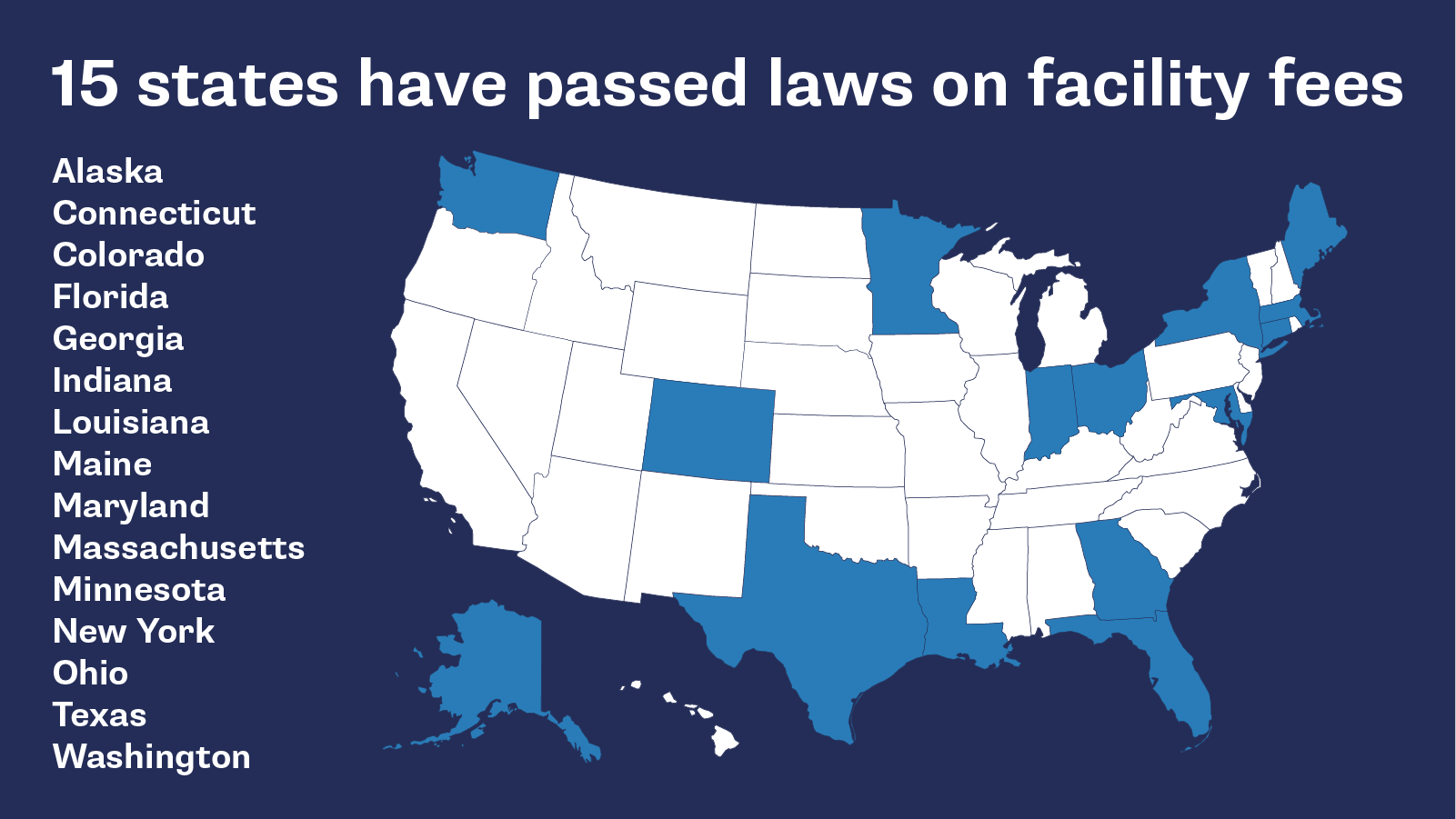
Outpatient outrage: Hospitals charge fees for care at the doctor’s office
More patients are seeing extra “facility fee” charges on their medical bills
This new report explains why facility fees are increasing in frequency and the impact they have on costs.

Download and Read Full Report Here
Imagine going to the same doctor for ten years. They do your annual physical, they check out your wrist when you injure it, they provide your prescriptions to control your high cholesterol. For each of these visits, you have paid your $15 copay and gone home.
Now imagine going to the same doctor for this year’s physical, paying your copay, and a few days later getting a second bill for $100. You have never gotten this charge before, so you are confident that it is a mistake. But the provider says you owe it because the office is a hospital facility. It turns out that in the past year, the local hospital purchased your doctor’s practice, and the $100 is the “facility fee”, or “facility charge”. You are on the hook for an extra $100. You’ve just become an outraged outpatient – and unfortunately, you’re not alone.
Facility fees pose a problem for patients, insurers, and the health care system overall.
Hospitals charge these fees as well. But as the health system consolidates and hospitals buy up physician practices and clinics, more patients than ever are facing facility fees on bills for regular doctor visits. These added fees are unrelated to the cost of the care we receive, and can be merely based on changing ownership of the provider’s office. There is no evidence that shows these fees improve the value or outcome of health care services; facility fees simply improve the profit line for health care companies that own the different care locations.
Facility fee amounts vary tremendously, from minimal charges to thousands of dollars. If a patient has several appointments in a year, those additional fees can really add up. Even if insurers were to pick up the tab for facility fees, those costs incurred by thousands of patients likely would be passed on to patients in next year’s premium. In Connecticut, facility fees generated over $400 million in 2021 alone. No one should be paying these unjustified fees.

15 states have taken action to address facility fees, but in most cases, it’s not enough. The report digs further into each state’s laws, and categorizes the kinds of action they’ve taken to protect patients from facility fees.
This report explains why facility fees are increasing in frequency and the impact they have on costs. We review federal policy proposals and describe the steps some states have taken to address this growing problem. We also take a closer look at Connecticut, the state with the most comprehensive laws and public data on facility fees.
How decisionmakers can put an end to these unjustified facility fees:
1. Ban facility fees
Policymakers should establish data collection systems to fully capture the impact of facility fees on patients and their insurers. Even a one-time study to collect data on facility fee charges and payments would help provide context for public policy solutions.
Better data doesn’t solve the issue, but it can help lawmakers make more informed decisions about the best way to solve the high cost of unjustified facility fees – and transparency makes it plain that no one should be paying them.
2. Collect data on the frequency and cost of facility fees.
Policymakers should establish data collection systems to fully capture the impact of facility fees on patients and their insurers. Even a one-time study to collect data on facility fee charges and payments would help provide context for public policy solutions.
Better data doesn’t solve the issue, but it can help lawmakers make more informed decisions about the best way to solve the high cost of unjustified facility fees – and transparency makes it plain that no one should be paying them.
3. Inform patients about facility fees and whether their insurance will cover that charge in advance.
Disclosure of facility fees is an intermediary step to protect patients while a state pursues other more comprehensive and effective solutions. Providers should inform patients of facility fees at the time of scheduling care, and again at the office on the day of service. The notice should include the fee amount and help the patient understand whether their insurance will cover that fee. In addition, any facility fee should be clearly identified in a standardized line-item format on a bill so patients can know the reason for the charge and the amount they were actually billed.
However, notice is not sufficient. Notice ensures patients can take appropriate steps to budget or avoid excess fees when possible, but does not solve the problem.
Download the full report at the top left of this page.
Share your facility fee story with us here.
Topics
Authors
Maribeth Guarino
High Value Health Care, Advocate, U.S. PIRG Education Fund
Maribeth educates lawmakers and the public about problems in health care and pushes for workable solutions. When she's not researching or lobbying, Maribeth likes to read, play games, and paint.
Find Out More

A bad deal: Why you don’t want (medical credit) cards in your hand

Medical Bills: Everything you need to know about your rights

Did your insurance deny your health care claim? How to appeal.
